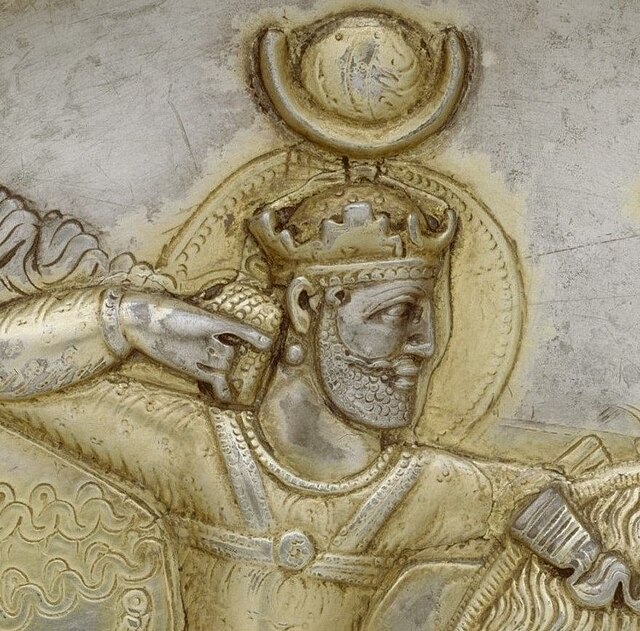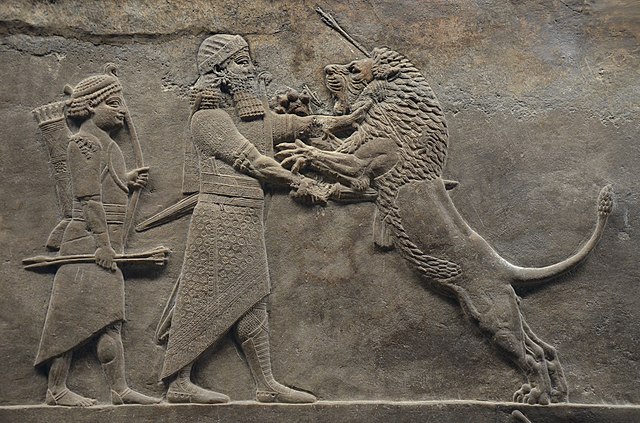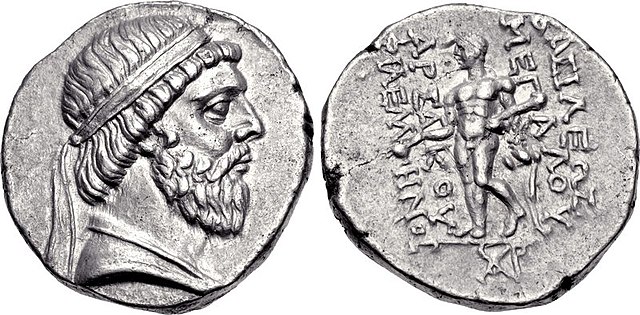Khosrow I, traditionally known by his epithet of Anushirvan, was the Sasanian King of Kings of Iran from 531 to 579. He was the son and successor of Kavad I.
Khosrow I on an ornamental plate in BnF Museum
Kavad I on a Sassanid plate
Solidus of the Byzantine emperor Justin I.
14th-century Shahnameh illustration of Khosrow I seated on his throne.
King of Kings was a ruling title employed primarily by monarchs based in the Middle East. Although most commonly associated with Iran, especially the Achaemenid and Sasanian Empires, the title was originally introduced during the Middle Assyrian Empire by king Tukulti-Ninurta I and was subsequently used in a number of different kingdoms and empires, including the aforementioned Persia, various Hellenic kingdoms, India, Armenia, Georgia, and Ethiopia.
The title King of Kings was prominently used by Persian kings such as Darius the Great (pictured). The full titulature of Darius was Great King, King of Kings, King of Persia, King of the Countries, Hystaspes' son, Arsames' grandson, an Achaemenid.
King of Kings was among the many titles used by King Ashurbanipal of the Neo-Assyrian Empire (depicted strangling and stabbing a lion).
Xerxes the Great of the Achaemenid Empire referred to himself as the great king, the king of kings, the king of the provinces with many languages, the king of this great earth far and near, son of king Darius the Achaemenian.
Mithridates I of Parthia (r. 171–132 BC) was the first post-Achaemenid Iranian king to use the title of King of Kings. Beginning with the reign of his nephew Mithridates II (r. 124–88 BC), the title remained in consistent usage until the fall of the Sasanian Empire in 651 AD.








